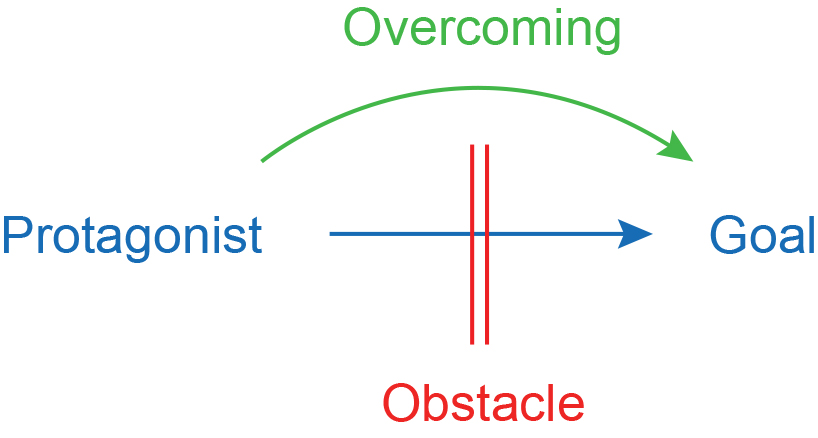Storyfication: The Art of Making Your Point through Story
“I want to tell you a story.”
If you want to grab an audience’s attention, there’s not a much better way to do so than by starting with those words.
Suddenly, ears will perk up, people will gravitate toward you. It’s a little Jedi-mind-trick-y, really, the way that people respond to a good story.
It’s for this reason that stories are just about the most powerful way to convey ideas no matter what context—and, contrary to popular belief—that goes for business as well.
We have this assumption that business is supposed to be boring. It’s about the data, facts, the bottom line. And, as such, there can’t be a shred of entertainment about it. The result is just that: boring.
But you need to grab your audience’s attention even in a business context—especially in a business context. You have important ideas to share, and cannot risk your audience tuning out, checking email, or falling asleep while you speak.
It’s no wonder, then, that storytelling has become a fashionable way to draw in your audience in a business context. If you Google ‘storytelling in business’ you’ll get 40 million results. That’s a lot of stories.
Getting it wrong.
The problem is that most of these approaches get it wrong. They urge you to add entertaining stories to your content even if they’re irrelevant, or add relevant stories to your presentation even if they’re mundane. In the former, the audience is engaged but distracted—like they just saw a good Super Bowl ad but can’t remember what it was advertising. In the latter, the audience is focused but weary—like they found their seat for a cross-country flight next to someone who can’t wait to tell them about their history of doctors visits.
Ever since New Journalism swept through in the 1960s, everyone wants to add stories to their articles or speeches, and hardly anyone is doing it right. You can just imagine the scene:
Publisher: “We need a story here.”
Writer: “I don’t have anything.”
Publisher: “Well, what about how you researched the topic? Tell a story about that.”
Writer: “Tell a story about how I searched LexisNexis and read some articles?”
Publisher: “Sure—readers love that kind of stuff!”
Actually, they don’t. No one cares about how you interviewed so-and-so in this-or-that fancy lab. It’s a waste of time, and, worse, it diminishes the efficacy of storytelling when people have to plod through a non-story to get to the point.
So, how can we harness the power of story if it’s not by adding stories to our presentations?
The trick is, rather than adding stories to your content, make your content into a story itself. In a word, storyfy what you have to say. Don’t add stories on top of your point, give your point the form and character of a story so that your audience doesn’t have to make the connection.
In order to do that, we need to know what a story is and how it works. It’s tempting to see stories as just a simple series of events. But that would be to miss the forest for the trees.
At its most basic, a story can be described with a simple formula:
A protagonist has a goal that is blocked by an obstacle that the protagonist must overcome.
To convey this formula in a story, simply describe each of these components in order:
1. The protagonist
2. A goal
3. An obstacle
4. Overcoming
It’s as simple as that. Any time you convey this kind of structure in your presentation or article, it will pack the punch of a good story, and you’ll be able to grasp the audience’s attention like any great epic or romance.
Most likely, you can already see how you might take this formula and build out your business presentation in the same way. To be sure, the elements are almost always before you already:

Using this framework, we can relay any kind of information in a coherent, meaningful way, and get your audience cheering for your solution.
An example might sound like this:
We want to reach a 10 on our member satisfaction survey despite major noticeable rate increases and the way we’ll do that is by new benefits in our membership program.
Elaborate on this simple outline, and you can see how powerful the technique can be.
It will help to dive a little deeper in each one of these elements to make sure we’ve got the right idea.
Make your protagonist likable.
The essential component of all stories is your main character, your hero, or your protagonist. This is who or what is driving the story, seeking the goal, and overcoming the obstacle. The most important thing you have to remember when describing your protagonist is that the audience has to be able to relate to him, her, or it. The best way to do that is to portray him, her, or it as likeable in some way.
There are five common ways to make them likeable: Make your protagonist either 1) excellent at what he does, 2) funny and relatable, 3) attractive, 4) the subject of injustice, or 5) in some sort of danger, or any combination of all of these.
Example: Shawn Achor opens his TED talk with a little story about his little sister and him as children, which instantly makes the protagonist likable.
Make your goal absolutely necessary.
How do you know a character is your protagonist? Easy, make sure they have a goal. As soon as we see a character has a goal, there’s an almost instinctive reaction to root for him to obtain it. And this is the key: It doesn’t matter what the goal is as long as it’s the most important thing for your protagonist. It is the dream, the ideal, the ultimate purpose in his life.
Of course, it’s rare to identify such an important goal, especially in a business setting. But the more important you can make it out to be, the better. If the protagonist doesn’t care, then neither will your audience.
Example: Johnny Georges makes his pitch at Shark Tank and uses a story (at around 3:50) to convince the sharks of the necessity of his product.

Make your obstacle impossible to overcome.
This is the most frustrating part of the story structure, but it’s absolutely necessary. Without something blocking your protagonist from his goal, there is no tension and there is no story. And the more tension the better. When you present the obstacle, your audience has to think that that completely confounds your protagonist and there’s no way for him to achieve his goal. The more impossible it seems, the more rewarding it will be when you reveal what your protagonist does to overcome.
Example: See Steve Jobs for an excellent example of building up IBM as Big Brother in the way of Apple’s computer utopia at his 1984 Macintosh presentation.
Make your overcoming awesome.
The overcoming of the obstacle is where the action happens, where all of the build-up pays off, and your audience is rewarded with a simple, concrete way to achieve the goal. This is what you’re trying to pitch, and the more unexpected, insightful, and awesome it is, the more convinced your audience will be.
Example: Ronald Reagan shares a story about communication that has the crowd cheering for more.
Everyone loves a good story. It’s almost ingrained in our DNA the way that we react. By using these techniques, we can harness the power of story anywhere we present, even at the office.





